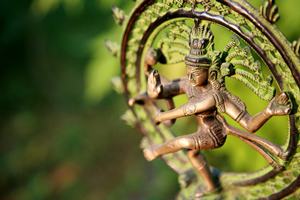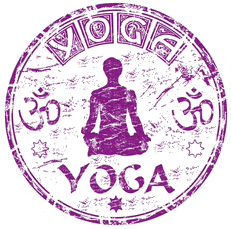
Hatha-yoga, an ancestral yoga practice, has become so popular through the Yoga-Sutrâ of Patanjali2 and through the Sanskrit text of Svātmārāma, the Hatha-yoga Pradipikâ3.
Nataraja, la danse cosmique de Shiva1

Today, Hatha-Yoga practice is very frequently reduced to asana and pranayama practice, physically very demanding. It is necessary to recall that Hatha-Yoga is primarily linked to the energetic level and not to the physical and physiological levels. The fundamental concept behind is to apply precise techniques in order to bring the energy called prana into a regular and a free flow to restore health, balance and stability.
As a matter of fact, the word hatha refers to the union of two fundamental concepts Ha and Tha, which symbolize the masculine and the feminine energies existing in every human being. Hatha-Yoga aims at harmonizing these two energies in order to strengthen the energy flowing in the body and to make it flow more regularly to bring about a physical, physiological and mental balance.
Although the ancient texts recommend to practice all the different aspects of yoga, some of them are not actual anymore today and should be revised and adapted to modern life. Modern Hatha-Yoga requires to practice the 3 following techniques:
The first one, asana, refers to the physical body.
It is about practicing different postures, dynamically and statically, joined to breathing exercises. This association has the effect of balancing the energy flow through our physical and physiological structure.
The second one, probably the most important one, is the pranayama.
It corresponds to a conscious regulation of breath through the control of breathing rhythms. It is also possible to add body positions to stay in, such as the bending down of the chin and also the positions with the abdomen contracted, called the bandha. It is also possible to add visualizations which reinforce the effects of pranayama.
The third one corresponds to the mudras.
The mudras are special body positions accompanied by mental attitudes and breathing exercises aiming at maintaining energy in some parts of the body in order to reinforce the vital energy induced by pranayama.
Hatha-Yoga masters recommend also in addition to this to follow the principles of Yama and Niyama in order to reach optimal benefits of the practice.
In a word, the practice of Hatha-Yoga invites us to stick to the reality it has discovered and which is still very actual: vital energy called Prana which guarantees us physical, physiological and mental health if it can flow freely and regularly.

- Inde, période Cola, Musée Guimet, Paris. © GNU Free Documentation License version 1.2
- Cf. Le Yoga-sutrâ de Patanjali, texte, traduction et commentaires de T.K.V. Desikachar, Monaco, éd. Du Rocher, 1986
- Hatha-yoga pradipikâ, trad., introd. et notes, avec extraits du commentaire de Brahmānanda par T. Michaël, préf. de J. Filliozat, Paris, Fayard, 1997.



